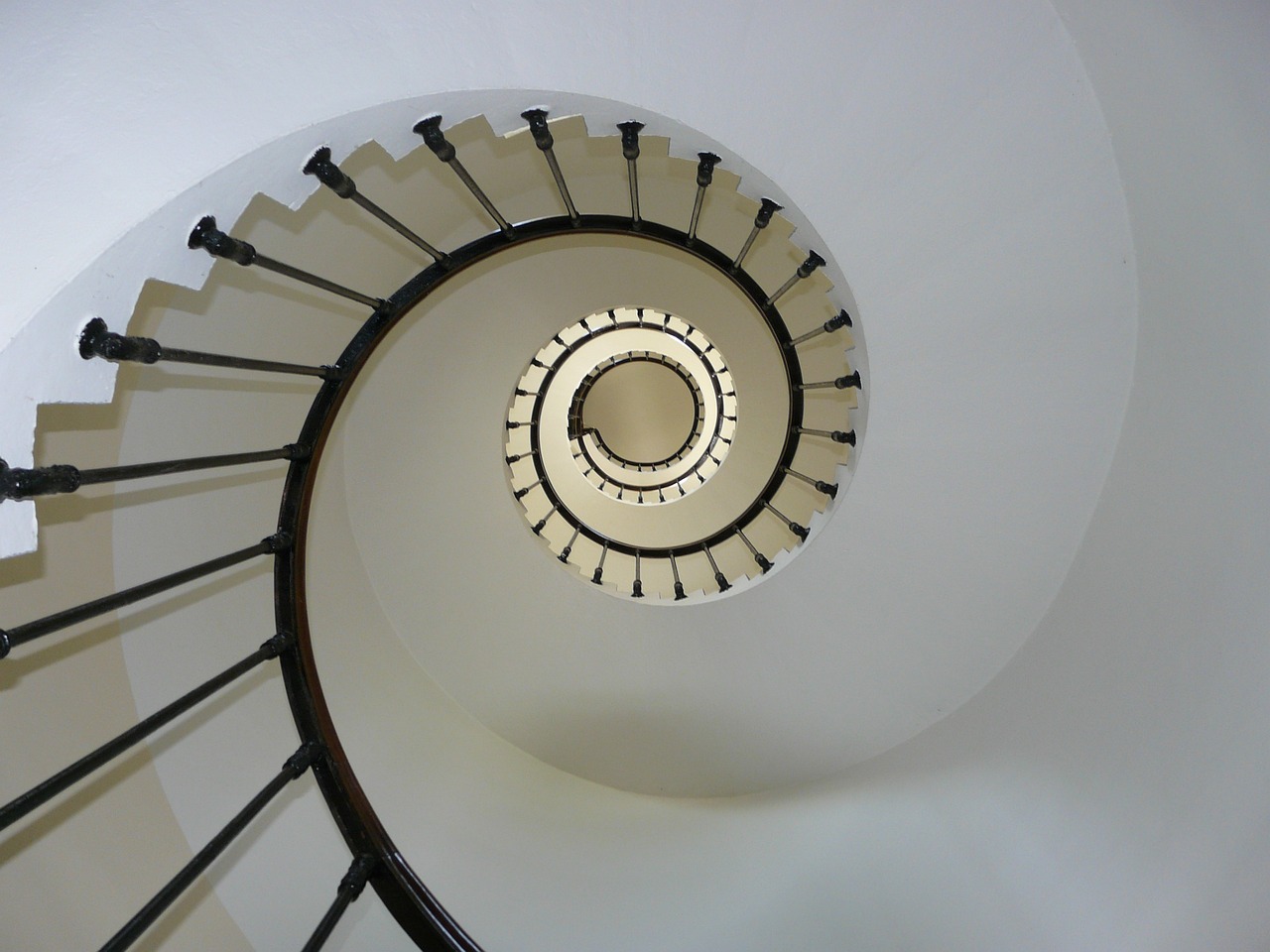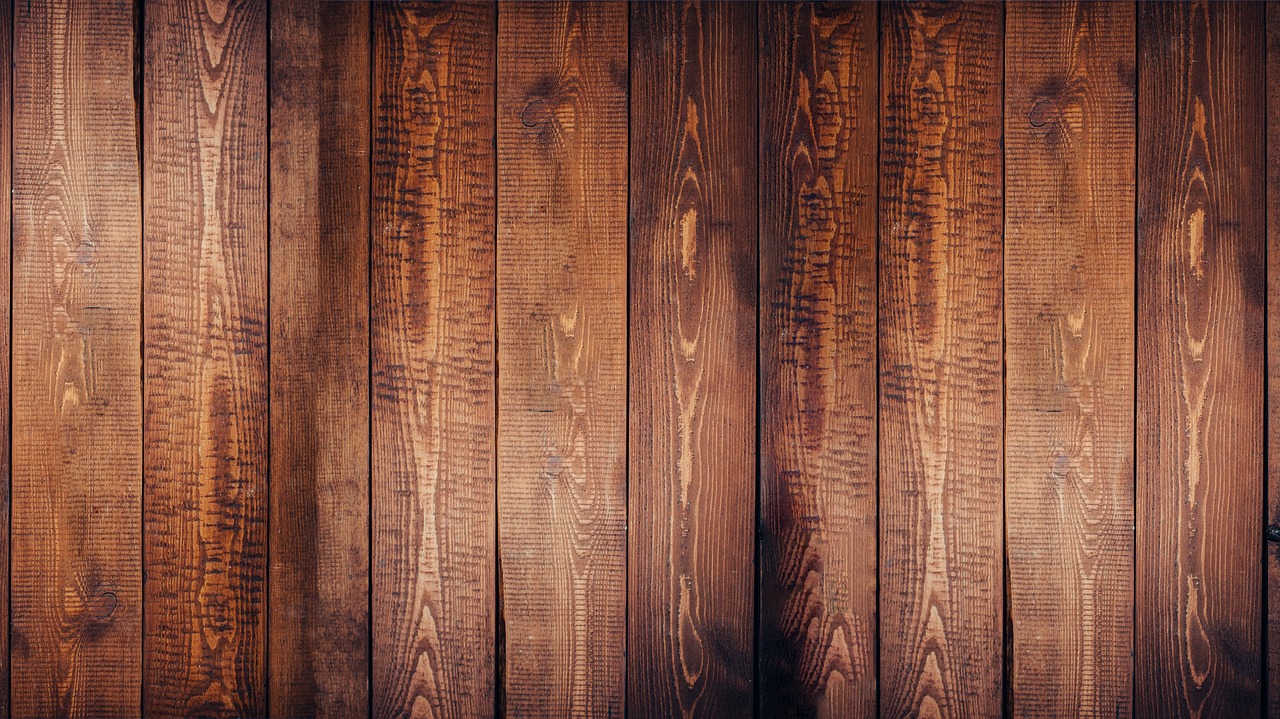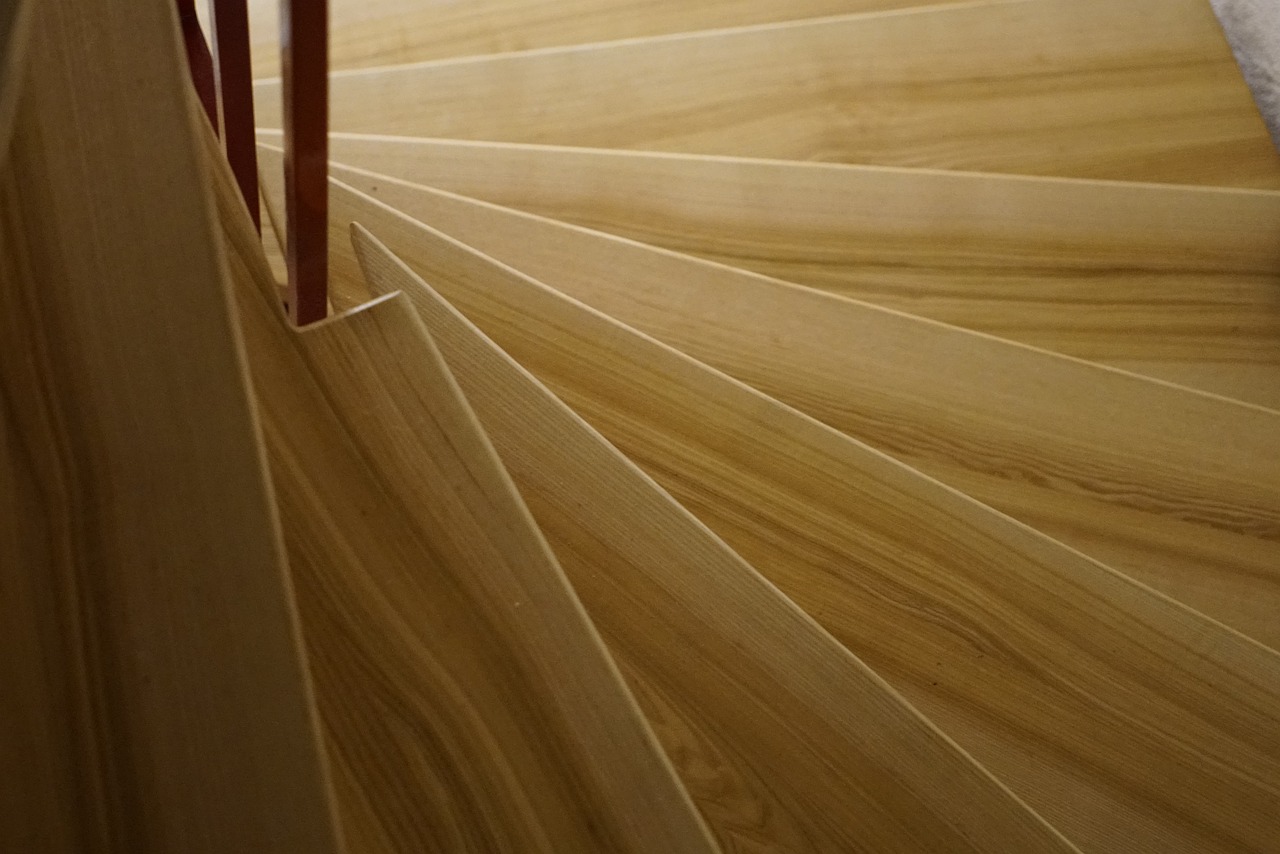Practical Guide to Building Wooden Stairs
Building wooden stairs may seem like a daunting task, but with the right guidance, it can transform into a rewarding DIY project that enhances your home’s beauty and functionality. This article provides a comprehensive overview of the essential steps, materials, and techniques required for constructing sturdy and aesthetically pleasing wooden stairs for your home or project. Whether you're looking to create a stunning centerpiece in your foyer or a simple staircase to connect different levels, understanding the fundamentals is key to achieving a successful outcome.
Before diving into construction, it's crucial to grasp the fundamental principles of stair design. The concepts of rise, run, and overall layout play a vital role in ensuring safety and functionality. The rise refers to the vertical distance between each step, while the run is the horizontal distance. A well-designed staircase should have a comfortable ratio of rise to run to facilitate easy navigation. Think of it like a dance; the steps should flow smoothly without causing anyone to trip or stumble. Additionally, consider the overall layout of the stairs, such as straight, L-shaped, or spiral, depending on the space available and your aesthetic preferences.
Selecting the right materials is vital for both durability and appearance. The choice of wood can significantly affect the overall look and longevity of your stairs. This section outlines the various types of wood and additional supplies necessary for building wooden stairs. When choosing materials, consider factors such as strength, aesthetics, and cost. For instance, while oak is a popular choice due to its strength and beautiful grain, it can be pricier compared to softer woods like pine.
Different types of wood offer varying levels of strength, aesthetics, and cost. Hardwoods like oak, maple, and cherry are often preferred for their durability and rich appearance, making them ideal for high-traffic areas. On the other hand, softwoods such as pine and fir are more affordable and easier to work with, making them suitable for less demanding applications. Ultimately, the best option for your stair project will depend on your specific needs and budget.
Understanding the differences between softwoods and hardwoods will help you make informed decisions on which type suits your stair construction needs. Softwoods are generally lighter and easier to cut, making them a favorite among DIY enthusiasts. However, hardwoods are denser and more resistant to wear, which is why they are often used in more permanent constructions. Think of softwoods as the friendly neighbor who helps you move furniture, while hardwoods are like the sturdy friend who can lift heavy weights effortlessly.
Applying the right finishes and treatments can enhance the longevity and appearance of your wooden stairs. Options such as stains, paints, and sealants not only protect the wood from damage but also allow you to customize the look to match your home’s decor. A well-chosen finish can highlight the natural beauty of the wood grain or provide a bold splash of color. Remember, a little care goes a long way in maintaining the charm of your wooden stairs.
Using the appropriate tools is essential for a successful build. This section lists the necessary tools and equipment for constructing wooden stairs effectively. Some of the basic tools you’ll need include:
- Measuring tape
- Level
- Circular saw
- Drill
- Chisels
- Sandpaper
- Clamps
Having the right tools at your disposal will not only make the process smoother but also ensure that your stairs are built to last.
This section provides a detailed, step-by-step guide to constructing wooden stairs, ensuring you follow the correct procedures for safety and quality. The journey begins with accurate measurements and planning, which are critical to a successful build. Discover how to measure your space and create a detailed plan for your stairs. Remember, taking the time to plan properly can save you from headaches later on.
Accurate measurements and planning are critical to a successful build. Start by measuring the height from the lower level to the upper level where the stairs will be installed. This will help you determine the rise and run of each step. Next, sketch a plan that includes the dimensions of your stairs, taking into account landings and any turns. It’s like drawing a roadmap; the more detailed it is, the easier your journey will be.
Learn the techniques for cutting and assembling the various components of your stairs, including treads, risers, and stringers, to ensure a secure structure. Precision in cutting is crucial; a slight miscalculation can lead to uneven steps, which can be dangerous. Once cut, assemble the components carefully, ensuring everything fits snugly and securely. Think of it as putting together a puzzle; each piece must fit perfectly to create a cohesive whole.
Once the stairs are built, proper installation and finishing touches are necessary. This section covers how to install your stairs and apply final finishes for a polished look. Secure the stairs in place, ensuring they are level and stable. Finally, apply your chosen finishes, whether it’s a protective sealant or a fresh coat of paint, to bring your vision to life. With the right care and attention, your wooden stairs will not only be functional but also a stunning feature of your home.
Q: How long does it take to build wooden stairs?
A: The time it takes can vary based on your experience and the complexity of the design, but generally, it can take anywhere from a few days to a week.
Q: Can I build stairs without professional help?
A: Yes, with the right tools, materials, and guidance, many DIY enthusiasts successfully build their own stairs. Just ensure you follow safety guidelines and local building codes.
Q: What is the best wood for outdoor stairs?
A: For outdoor stairs, consider using pressure-treated wood or naturally durable woods like cedar or redwood, as they can withstand the elements better.

Understanding Stair Design
Before diving into the exciting world of stair construction, it’s essential to grasp the fundamental principles of stair design. Think of stair design as the backbone of your staircase; it ensures not only functionality but also safety. The two primary components you need to familiarize yourself with are the rise and run.
The rise refers to the vertical distance between each step, while the run is the horizontal distance from the front of one step to the front of the next. These measurements play a crucial role in the overall comfort and safety of your stairs. For instance, if the rise is too high, it can make climbing the stairs a daunting task, while a shallow run can lead to instability. Ideally, the rise should be between 7 to 8 inches, and the run should be around 10 to 12 inches. This balance creates a comfortable ascent and descent.
Moreover, the overall layout of your stairs is equally important. You need to consider factors like the width of the staircase, the number of steps, and the total height you’re working with. A well-designed staircase not only enhances the aesthetic appeal of your home but also ensures that it meets local building codes. It’s like creating a beautiful piece of art that you can walk on—functional yet stunning!
When planning your staircase, it’s helpful to sketch out a rough design. This doesn’t have to be a masterpiece; just a simple drawing that outlines the rise, run, and any landings you may need. You might even want to use graph paper to keep your proportions accurate. Remember, the more detailed your plan, the smoother the construction process will be.
Lastly, consider the materials and finishes you want to use. The type of wood you choose can significantly impact the overall look and feel of your stairs. For example, a rich mahogany can add elegance, while a sturdy pine can offer a more rustic charm. Don't forget to think about how you'll finish your stairs, as this can affect both durability and appearance. Will you stain them for a darker finish, or perhaps paint them a bright color to make a statement? The choices are endless!
In summary, understanding stair design is about more than just measurements; it’s about creating a safe, functional, and visually appealing structure that complements your home. So, as you embark on this journey, keep these principles in mind, and you’ll be well on your way to building stunning wooden stairs!
- What is the ideal rise and run for stairs? The ideal rise is typically between 7 to 8 inches, while the run should be around 10 to 12 inches for comfort and safety.
- How do I ensure my stairs meet building codes? Always check your local building codes before starting your project, as they can vary by location and may dictate specific measurements and design features.
- What types of wood are best for stair construction? Hardwoods like oak and maple are often preferred for their durability and aesthetic appeal, but softwoods like pine can also be used for a more budget-friendly option.

Materials Needed
When embarking on the exciting journey of building wooden stairs, one of the most critical aspects to consider is the materials you'll be using. The quality and type of materials can significantly impact the durability, safety, and aesthetic appeal of your stairs. So, let’s dive into what you’ll need to gather before you start hammering away!
First and foremost, you’ll need to select the right type of wood. The choice between softwoods and hardwoods can be a game changer. Softwoods like pine or fir are often more affordable and easier to work with, making them great for DIY projects. However, if you’re looking for something that screams luxury and durability, hardwoods like oak or maple might be the way to go. They not only offer a stunning finish but also stand up to wear and tear over time.
In addition to wood, you’ll require a few other essential supplies. Here’s a quick rundown of what you might need:
- Adhesives: Wood glue is a must-have for ensuring that your joints are strong and secure.
- Fasteners: Screws and nails will hold everything together. Opt for galvanized or stainless steel to prevent rusting.
- Brackets: These can provide additional support and stability, especially for the stringers.
- Finishing products: Stains, varnishes, or sealants will protect your wood from moisture and enhance its natural beauty.
Now, let’s talk about the finishes and treatments. Applying the right finish can not only enhance the visual appeal of your wooden stairs but also extend their lifespan. Consider using a high-quality sealant to protect against scratches and moisture. A good stain can bring out the rich colors of the wood, while a varnish can provide that glossy finish that makes your stairs the focal point of your home.
Here’s a quick comparison of different wood types and their characteristics to help you make an informed decision:
| Type of Wood | Durability | Cost | Aesthetic Appeal |
|---|---|---|---|
| Softwood (e.g., Pine) | Moderate | Low | Light, warm tones |
| Hardwood (e.g., Oak) | High | High | Rich, deep colors |
| Composite | Moderate | Medium | Varied finishes |
Before you rush off to the hardware store, make sure you have a clear list of everything you need. This will not only save you time but also ensure that you don’t forget any critical components. Remember, a well-planned project is a successful project!

Choosing the Right Wood
When it comes to building wooden stairs, the choice of wood is not just a matter of aesthetics; it's a crucial decision that impacts durability, safety, and overall appeal. You want a material that can withstand the test of time while also enhancing the beauty of your home. So, how do you choose the right wood for your stair project? It all boils down to understanding the different types of wood available and what each offers.
First off, you need to consider the strength and durability of the wood. Stairs endure a lot of foot traffic, so you’ll want something that can handle the wear and tear. Here’s where hardwoods shine. They are typically denser and more durable than softwoods, making them an excellent choice for treads and risers. Popular hardwood options include oak, maple, and cherry. Each of these woods not only provides the strength needed but also boasts a rich grain that can elevate the look of your stairs.
On the flip side, softwoods like pine and fir can be more budget-friendly and easier to work with. They are lighter and often come in larger dimensions, which can simplify the construction process. However, keep in mind that they may not hold up as well over time compared to their hardwood counterparts. If you decide to go with softwoods, consider using them for less-trafficked areas or as decorative elements.
Another factor to consider is cost. Hardwoods can be pricier, but their longevity might save you money in the long run. It’s essential to weigh your options and consider your budget. If you’re on a tight budget but still want a beautiful finish, you might opt for a combination of softwoods for structural elements and hardwoods for visible parts like the treads.
To help you visualize your options, here’s a simple comparison table:
| Type of Wood | Durability | Cost | Aesthetic Appeal |
|---|---|---|---|
| Hardwoods (e.g., Oak, Maple) | High | Higher | Rich grain, elegant finish |
| Softwoods (e.g., Pine, Fir) | Moderate | Lower | Lightweight, rustic charm |
Lastly, don’t forget about the finishes and treatments. Regardless of the wood type you choose, applying a protective finish can significantly extend the life of your stairs. Options like polyurethane, oil-based finishes, or even natural oils can protect your wood from scratches and moisture, ensuring that your stairs remain as stunning as the day you built them.
In conclusion, choosing the right wood for your stairs is a blend of personal preference, budget, and practical considerations. Whether you opt for the strength of hardwood or the charm of softwood, make sure you take the time to select a wood that fits your needs and complements your home. After all, your stairs are not just a functional element; they are a statement piece that can enhance the overall look of your living space.

Softwoods vs. Hardwoods
When embarking on the journey of building wooden stairs, one of the most critical decisions you'll face is choosing between softwoods and hardwoods. Each type of wood has its own unique characteristics, benefits, and drawbacks that can significantly impact the durability, aesthetics, and overall functionality of your stair project. Understanding these differences is essential for making an informed choice that aligns with your specific needs and preferences.
Softwoods come from coniferous trees, such as pine, cedar, and fir. These types of wood are generally lighter, easier to work with, and more affordable than hardwoods. For instance, pine is a popular choice for stair construction due to its availability and cost-effectiveness. However, while softwoods can be more susceptible to dents and scratches, they can also be treated with finishes that enhance their durability. If you're looking for a budget-friendly option that still offers a solid performance, softwoods might be the way to go.
On the other hand, hardwoods are derived from deciduous trees like oak, maple, and cherry. These woods are renowned for their strength and durability, making them an excellent choice for high-traffic areas. Hardwoods tend to have a more elegant appearance, often featuring intricate grain patterns and rich colors that can elevate the aesthetic appeal of your home. However, they typically come with a higher price tag and can be more challenging to work with due to their density. If you're aiming for a luxurious finish and long-lasting quality, investing in hardwoods could be worth it.
To help you further understand the differences between softwoods and hardwoods, here's a quick comparison:
| Feature | Softwoods | Hardwoods |
|---|---|---|
| Density | Generally less dense | Typically more dense |
| Cost | More affordable | Higher price point |
| Workability | Easier to cut and shape | More challenging to work with |
| Durability | Less durable, more prone to damage | Highly durable and resistant to wear |
| Aesthetic Appeal | Simple, rustic look | Rich, intricate grain patterns |
Ultimately, the choice between softwoods and hardwoods will depend on your specific project requirements, budget, and personal taste. If you're still unsure, consider factors such as the location of the stairs, the expected foot traffic, and the overall design aesthetic of your home. Remember, the right wood can make all the difference in creating a staircase that is not only functional but also a stunning focal point in your space.
Q: Can I use softwood for outdoor stairs?
A: Yes, but it's essential to treat the wood with a weather-resistant finish to prevent damage from moisture and pests.
Q: How do I maintain hardwood stairs?
A: Regularly clean them with a soft cloth and use a wood-specific cleaner. Additionally, consider applying a protective finish every few years to maintain their beauty.
Q: Are there any eco-friendly options for stair construction?
A: Yes, look for sustainably sourced wood or consider reclaimed wood, which can add character while being environmentally friendly.

Finishes and Treatments
When it comes to building wooden stairs, the finish and treatment you choose can significantly impact both the durability and the aesthetic appeal of your stairs. Think of it as giving your stairs a protective armor that enhances their beauty while shielding them from wear and tear. The right finish not only brings out the natural beauty of the wood but also provides essential protection against moisture, scratches, and daily use.
There are several types of finishes available, each offering unique benefits. Here’s a brief overview of some popular options:
- Polyurethane: This is a common choice for its durability and resistance to scratches. It's available in both oil-based and water-based formulas, with the latter drying faster and having lower odor.
- Varnish: Varnish provides a hard, protective coating and is ideal for high-traffic areas. It can enhance the wood grain while offering a glossy finish.
- Oil Finishes: Oils penetrate the wood, providing a natural look and feel. They require more maintenance but can be easily reapplied when needed.
- Stains: While stains primarily change the color of the wood, they can also provide a degree of protection. Combining stains with a clear finish can yield beautiful results.
Before applying any finish, it’s crucial to prepare the wood properly. This means sanding the surface to remove any imperfections and ensure a smooth application. Always clean the dust thoroughly before applying your chosen treatment to achieve the best results.
Another important aspect to consider is the environmental impact of your finishes. If you're concerned about VOCs (volatile organic compounds), look for eco-friendly options that are low in emissions. These finishes are not only better for the environment but also safer for your home and family.
In addition to the finishes mentioned, treatments like waterproofing can be beneficial, especially if your stairs are exposed to moisture. This treatment helps to prevent water damage and prolongs the life of your wooden stairs.
Finally, remember that the application technique is just as important as the finish itself. Follow the manufacturer's instructions regarding application methods and drying times to ensure a flawless finish. Whether you’re using a brush, roller, or spray, consistency is key to achieving a professional look.
Q: How often should I refinish my wooden stairs?
A: It depends on the amount of traffic your stairs receive. Generally, refinishing every 3-5 years is recommended for high-traffic areas, while less frequented stairs may only need it every 5-10 years.
Q: Can I use outdoor finishes on indoor stairs?
A: While outdoor finishes are designed to withstand the elements, they may not be necessary for indoor use. Indoor finishes are typically formulated for the specific conditions of indoor environments.
Q: What should I do if my finish starts to peel?
A: If your finish begins to peel, it’s essential to sand down the affected areas and reapply the finish. Ignoring peeling can lead to further damage to the wood underneath.

Tools Required
When it comes to building wooden stairs, having the right tools is absolutely essential for ensuring a smooth and successful project. Imagine trying to bake a cake without a mixer or measuring cups; the same principle applies here. You wouldn’t want to start cutting wood without the proper tools, as it could lead to mistakes that may compromise the integrity of your stairs. So, let's dive into the list of tools you'll need to gather before you embark on this rewarding journey of stair construction.
First and foremost, you'll need a measuring tape. Accurate measurements are crucial, and a good measuring tape will help you achieve precision. You might also consider a carpenter's square to ensure your cuts are perfectly angled. This tool is a lifesaver when it comes to checking the squareness of your joints. Additionally, having a level on hand is vital for making sure your stairs are even and safe to use.
Next, let’s talk about cutting tools. A circular saw is a must-have for cutting your treads, risers, and stringers. If you want to make your life a little easier, you might also want to invest in a miter saw for those precise angled cuts. For more intricate work, a jigsaw can come in handy, especially if you're designing custom shapes or curves in your stairs.
Once you’ve got your pieces cut, you’ll need some tools for assembly. A drill is essential for driving screws into the wood securely. Make sure to have a variety of drill bits and screw sizes available, as this will allow you to tackle different aspects of the construction. You might also want a screwdriver set for any manual adjustments or touch-ups.
Finally, don’t forget about safety equipment! A good pair of safety goggles and ear protection are non-negotiable. You want to protect your eyes from flying wood chips and your ears from the loud noise of power tools. Additionally, wearing a dust mask is advisable, especially when sanding or cutting wood, to avoid inhaling harmful particles.
In summary, here’s a quick recap of the essential tools you'll need:
- Measuring tape
- Carpenter's square
- Level
- Circular saw
- Miter saw
- Jigsaw
- Drill
- Screwdriver set
- Safety goggles
- Ear protection
- Dust mask
Gathering these tools before you start will save you time and frustration later on. Think of it as assembling your own toolkit of success; each tool plays a vital role in creating a sturdy and beautiful set of wooden stairs. With the right tools in hand, you’ll be well on your way to crafting a staircase that not only meets your functional needs but also enhances the aesthetic appeal of your home.

Step-by-Step Construction Process
Building wooden stairs may seem like a daunting task, but with the right guidance and a bit of patience, you can create a stunning staircase that enhances the beauty and functionality of your home. The involves several critical phases, each requiring careful attention to detail. Let's break it down into manageable parts to ensure a successful build.
First and foremost, measuring and planning your staircase is essential. Start by determining the total rise and run of your stairs. The rise is the vertical distance from the lower floor to the upper floor, while the run is the horizontal distance your stairs will cover. A common rule of thumb is that each step should have a rise of about 7 inches and a run of about 11 inches. To calculate how many steps you need, divide the total rise by the height of each step. This will give you a clear idea of how many risers you will need to construct.
Once you have your measurements, it’s time to draw up a detailed plan. This plan should include the dimensions of each component of the stairs, such as the treads (the flat part you step on), risers (the vertical part), and stringers (the structural support that holds everything together). A well-thought-out plan is like a roadmap; it guides you through the construction process and helps prevent costly mistakes. Don’t forget to consider the overall aesthetics and how the stairs will fit into your home’s design.
Next, we move on to the cutting and assembling components. Using your measurements, cut the stringers first, as they are the backbone of your staircase. Ensure that each cut is precise; even a small error can lead to instability. After cutting the stringers, measure and cut the treads and risers. When assembling these components, be sure to use wood glue and screws for added strength. A tip here is to pre-drill holes for the screws to prevent the wood from splitting. As you assemble, double-check that everything is level and aligned properly.
After assembling the stairs, the next phase is installation. Carefully position the stairs in their designated space, ensuring they are secure and stable. Use a level to check that everything is even. Once the stairs are in place, it’s time for the finishing touches. Applying the right finishes and treatments not only enhances the appearance of your stairs but also protects them from wear and tear. Consider using a high-quality wood stain followed by a clear polyurethane finish to give your stairs a beautiful sheen while ensuring durability.
Finally, don’t underestimate the importance of cleaning up the work area and inspecting your work. This not only gives you a sense of accomplishment but also ensures that your new stairs are safe for use. Remember, a well-built staircase is not just about aesthetics; it’s also about safety and functionality. So, take your time, follow these steps, and you’ll have a beautiful set of wooden stairs that you can be proud of!
Here are some common questions that many people have when embarking on their stair-building journey:
- What type of wood is best for stairs? - Hardwoods like oak or maple are often preferred for their durability and aesthetic appeal.
- How long does it take to build wooden stairs? - The time can vary based on skill level and complexity, but expect to spend several days on a complete project.
- Can I build stairs without professional help? - Yes, many DIY enthusiasts successfully build their own stairs with careful planning and execution.

Measuring and Planning
When it comes to building wooden stairs, accurate measurements and thorough planning are your best friends. Imagine trying to fit a square peg in a round hole; that’s what happens when you skip this crucial step! First, you need to determine the total height your stairs will cover, which is known as the rise. This is simply the vertical distance from the lower floor to the upper floor. To measure this, use a reliable tape measure and ensure that you account for any floor coverings that will be added later, such as carpet or laminate.
Next, you’ll need to calculate the run, which is the horizontal distance your stairs will occupy. A simple rule of thumb is to maintain a ratio of about 7:11 for rise to run. This means for every 7 inches of rise, you should have about 11 inches of run. This ratio ensures that your stairs are comfortable and safe to use. To put this into perspective, let’s say your total rise is 42 inches; you can divide that by 7 to find out how many steps you’ll need. In this case, 42 divided by 7 equals 6, which means you’ll have 6 risers.
Now, let’s talk about the layout. You should sketch out a plan for your stairs, including the number of steps, their dimensions, and how they will fit into your existing space. This is where a simple table can come in handy:
| Component | Measurement (inches) |
|---|---|
| Rise | 7 |
| Run | 11 |
| Total Height | 42 |
| Number of Steps | 6 |
Additionally, consider the width of your stairs. A standard width is typically around 36 inches, but you might want to adjust this based on your space and the intended traffic. After all, no one likes feeling cramped on a staircase! Once you have your measurements, it’s time to create a detailed plan. This plan should include not only the dimensions but also the materials you’ll use and any design elements you want to incorporate, such as handrails or decorative risers.
Finally, don’t forget to check local building codes! Many regions have specific regulations regarding stair dimensions and safety features. Ensuring your design complies with these codes will save you a lot of headaches down the line. Remember, a well-planned project is a successful project, so take your time to get this right!
In summary, measuring and planning are the foundational steps in constructing wooden stairs. By taking the time to accurately measure your space, sketch a detailed layout, and adhere to building codes, you’ll set yourself up for a successful and safe stair project.
- What is the ideal rise and run ratio for stairs? The ideal ratio is typically 7:11, meaning for every 7 inches of rise, you should have 11 inches of run.
- How do I ensure my stairs are safe? Follow local building codes, ensure proper rise and run measurements, and consider adding handrails for safety.
- What tools do I need for measuring and planning? A tape measure, level, square, and pencil for marking are essential for this step.

Cutting and Assembling Components
When it comes to cutting and assembling the components of your wooden stairs, precision is key. The components you'll need to focus on include the treads, risers, and stringers. Each of these elements plays a crucial role in the overall safety and aesthetics of your stairway. Before you even think about picking up a saw, it’s essential to have a detailed plan in place. This plan should outline the dimensions of each component based on your initial measurements and design. Remember, a well-planned project is half done!
First, let’s talk about the treads and risers. Treads are the horizontal parts of the stairs where you step, while risers are the vertical sections that connect each tread. For a standard set of stairs, the tread depth typically ranges from 10 to 12 inches, and the riser height should be around 7 to 8 inches. To ensure uniformity and comfort, always adhere to these measurements. Use a tape measure and a square to mark your cuts on the wood accurately.
Next, the stringers are the backbone of your staircase. These are the diagonal supports that hold the treads and risers in place. You can either buy pre-cut stringers or cut your own from a sturdy piece of lumber. When cutting stringers, it’s essential to maintain the correct angle for the rise and run. A common method is to use a framing square to mark the rise and run on the board, ensuring each cut is consistent. This will guarantee that your stairs are not only beautiful but also safe to use.
Once all your components are cut, it’s time for assembly. Start by laying out the stringers on a flat surface, making sure they are spaced evenly apart. The recommended distance between stringers is usually around 16 inches. Next, attach the risers to the stringers first using wood screws or nails, ensuring they are flush with the edges. After securing the risers, it’s time to add the treads. Place each tread on top of the risers, ensuring that they overhang slightly for a finished look. Secure them in place using screws from underneath to maintain a clean appearance.
As you assemble the components, keep an eye on the alignment. Use a level to ensure everything is straight and even. If you notice any discrepancies, adjust the components before the glue or screws set. This attention to detail will pay off in the end, resulting in a staircase that is not only functional but also a stunning feature in your home.
In summary, cutting and assembling the components of your wooden stairs involves careful planning, precise cutting, and meticulous assembly. By following these steps, you’ll create a sturdy and attractive staircase that enhances the beauty of your home while ensuring safety for its users. Remember, the journey of building your stairs is just as important as the final product!
- What type of wood is best for stairs? Hardwoods like oak or maple are ideal for durability, while softwoods like pine can be more cost-effective.
- How do I ensure my stairs are safe? Follow standard building codes for rise and run measurements, and ensure all components are securely fastened.
- Can I paint or stain my wooden stairs? Yes, both options are great for enhancing the look of your stairs. Just ensure you use appropriate finishes for durability.

Installation and Finishing Touches
Installing your newly built wooden stairs is both an exciting and critical part of the project. This phase transforms your hard work into a functional and visually appealing feature of your home. To begin with, you need to ensure that the stairs are securely anchored and aligned properly. A well-installed staircase not only enhances safety but also elevates the overall aesthetic of your space.
Start by positioning the stringers in place. These are the backbone of your stairs, so make sure they are level and securely fastened to the floor and landing. You can use lag screws or brackets for a sturdy connection. Once the stringers are in place, carefully install the treads and risers. It’s essential to double-check that each tread is level, as this will prevent any wobbling or instability. A simple level tool can be your best friend here!
Now, let’s talk about the finishing touches. The way you finish your stairs can make a world of difference. Consider applying a high-quality wood stain to enhance the natural beauty of the wood. Stain not only adds color but also protects the wood from wear and tear. After staining, a protective sealant is recommended to guard against moisture and scratches. You might want to choose a polyurethane finish for its durability, but make sure to follow the manufacturer's instructions for application.
Another important aspect of finishing your stairs is the installation of handrails. Not only do handrails provide safety, but they also add a stylish element to your staircase. When installing handrails, ensure they are at the correct height—typically between 34 to 38 inches above the tread. Secure them firmly to the wall or the newel posts, which are the vertical posts at the ends of the staircase. This will ensure they can withstand the pressure of use.
Lastly, don’t forget about the aesthetics! Adding a carpet runner can enhance the look of your stairs and provide additional traction. If you opt for this, make sure it’s securely fastened to prevent any slipping. The choice of color and texture can complement your home’s decor beautifully. Remember, the goal is not just functionality, but also to create a stunning visual impact!
As you embark on your stair-building journey, you might have some questions. Here are a few common queries and their answers:
- What type of wood is best for stairs? - Hardwoods like oak or maple are ideal for their durability and aesthetic appeal, while softwoods can be more cost-effective but may require more maintenance.
- How do I ensure my stairs are safe? - Proper installation, including secure fastening of all components and the correct height for handrails, is crucial for safety.
- Can I install stairs myself? - Yes, with the right tools and a bit of patience, DIY installation is possible. Just ensure you follow all safety guidelines and measurements.
- What finish should I use for wooden stairs? - A polyurethane finish is recommended for its durability and resistance to wear, but you can also consider oil-based finishes for a natural look.
Frequently Asked Questions
- What is the best type of wood for building stairs?
Choosing the right wood is crucial for both durability and aesthetics. Hardwoods like oak or maple are often preferred for their strength and beautiful grain patterns, while softwoods like pine can be more affordable and easier to work with. It really depends on your budget and desired look!
- How do I measure for my wooden stairs?
Accurate measurements are key! Start by measuring the total height from the ground to the top of the landing. Then, decide on the rise (the height of each step) and run (the depth of each step). A common rise is about 7 inches, while a run is typically around 11 inches. Use these measurements to calculate the number of steps needed.
- What tools do I need to build wooden stairs?
You'll need a variety of tools for a successful stair project. Essential tools include a circular saw, measuring tape, level, square, and drill. Having a good set of safety gear, like goggles and gloves, is also important to keep you safe while working!
- Can I install wooden stairs myself?
Absolutely! With the right tools, materials, and a bit of patience, DIY stair installation is very doable. Just make sure to follow a detailed guide, take your time with measurements, and don’t hesitate to ask for help if you need it!
- What finishes should I use on my wooden stairs?
Finishing your stairs not only enhances their beauty but also protects them. You can use stains to bring out the wood's natural color, followed by a clear coat for protection. Polyurethane is a popular choice for its durability. Just ensure you allow adequate drying time between coats!
- How can I ensure my stairs are safe?
Safety is paramount when building stairs! Make sure your rise and run are consistent across all steps, use sturdy materials, and ensure the handrails are installed securely. Additionally, consider adding non-slip finishes to treads to prevent accidents.
- What are the common mistakes to avoid when building stairs?
One common mistake is miscalculating the rise and run, which can lead to unsafe stairs. Another is rushing the installation process; always double-check your measurements before cutting. Lastly, neglecting to finish the wood properly can lead to wear and tear over time.
- Is it necessary to hire a professional?
While many people successfully build their own stairs, hiring a professional can be beneficial, especially for complex designs or if you're unsure about your skills. A pro will ensure everything is up to code and safe for use, giving you peace of mind.



















